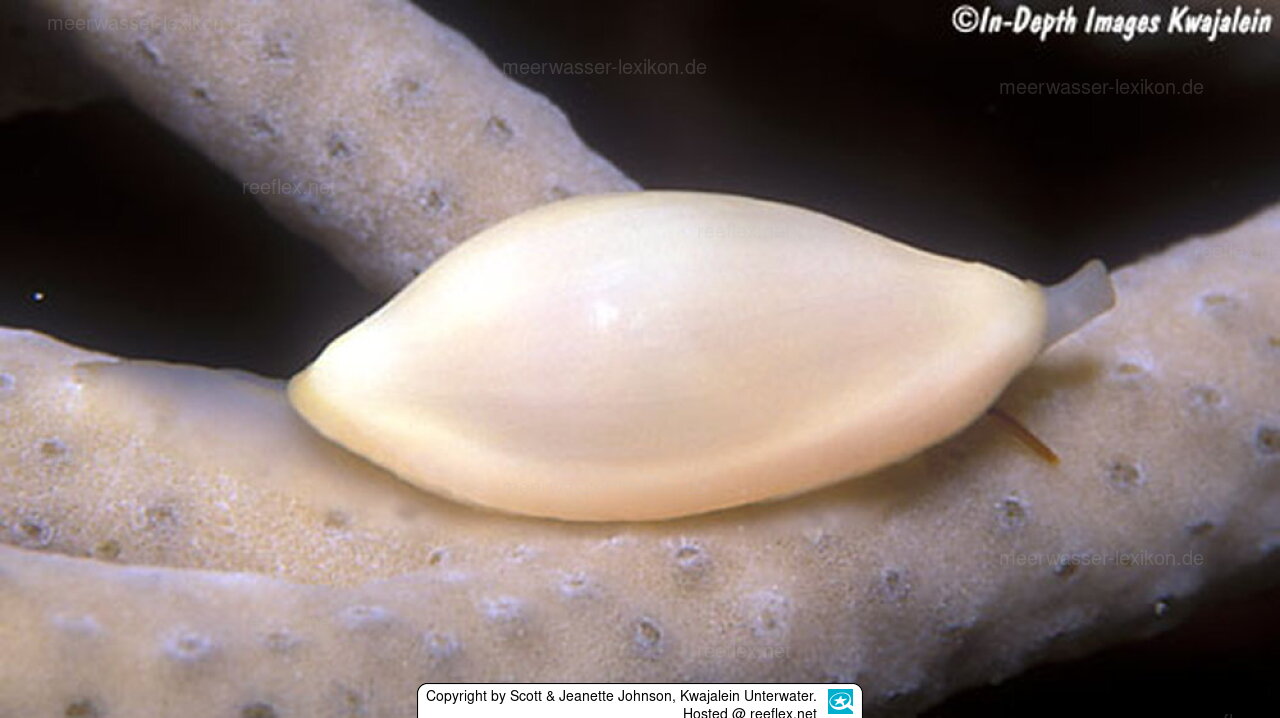Info
Naviculavolva kurziana (C. N. Cate, 1976)
Naviculavolva deflexa is a shell snail in the family Ovulidae, colloquially known as ice snails. Compared to porcelain snails, ice snails have a thinner-walled shell. The color is usually white, pink or yellow. Ice snails do not have an operculum. The soft body of these snails is strikingly patterned and surrounds the entire shell. They are widespread in the tropics.
Members of the family are carnivorous. They feed on sea fans, soft corals and gorgonians. Each species specializes in a particular prey and imitates its prey perfectly. They lay their spawn at the base of their host animal or attach it to branching soft corals, for example.
Naviculavolva kurziana occurs exclusively on the gorgonian Rumphella. Naviculavolva kurziana and two similar species, Naviculavolva deflexa and Naviculavolva malaita, feed exclusively on Rumphella. During the day, the short ice snail hides in holes or tufts of algae and gravel around the base of the gorgonian and comes to feed on the branches at night.
Naviculavolva deflexa can be distinguished externally by an orange or yellow line running around the underside of the shell, just above the base. Naviculavolva malaita has fine grooves on the shell; the other two species are smooth. The different species sometimes live on the same Rumphella.
Translated with DeepL.com (free version)
Synonymised names
Cymbovula kurziana C. N. Cate, 1976 · unaccepted (original combination)
Naviculavolva deflexa is a shell snail in the family Ovulidae, colloquially known as ice snails. Compared to porcelain snails, ice snails have a thinner-walled shell. The color is usually white, pink or yellow. Ice snails do not have an operculum. The soft body of these snails is strikingly patterned and surrounds the entire shell. They are widespread in the tropics.
Members of the family are carnivorous. They feed on sea fans, soft corals and gorgonians. Each species specializes in a particular prey and imitates its prey perfectly. They lay their spawn at the base of their host animal or attach it to branching soft corals, for example.
Naviculavolva kurziana occurs exclusively on the gorgonian Rumphella. Naviculavolva kurziana and two similar species, Naviculavolva deflexa and Naviculavolva malaita, feed exclusively on Rumphella. During the day, the short ice snail hides in holes or tufts of algae and gravel around the base of the gorgonian and comes to feed on the branches at night.
Naviculavolva deflexa can be distinguished externally by an orange or yellow line running around the underside of the shell, just above the base. Naviculavolva malaita has fine grooves on the shell; the other two species are smooth. The different species sometimes live on the same Rumphella.
Translated with DeepL.com (free version)
Synonymised names
Cymbovula kurziana C. N. Cate, 1976 · unaccepted (original combination)







 Scott & Jeanette Johnson, Kwajalein Unterwater
Scott & Jeanette Johnson, Kwajalein Unterwater





